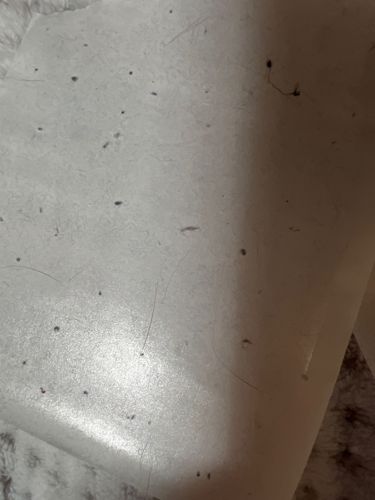Springtail
Scientific Name: Various species within the order Collembola
Order & Family: Order: Collembola (not an insect, but a related hexapod)
Size: Typically 0.2 mm to 10 mm in length, but most commonly less than 6 mm. The ones in the image appear to be very small, likely in the lower end of this range.

Natural Habitat
Springtails are found in a wide variety of habitats, especially where there is dampness and decaying organic material. This includes soil, leaf litter, rotting wood, under bark, in compost piles, and even indoors in bathrooms, kitchens, basements, and potted plants where moisture is present.
Diet & Feeding
They primarily feed on decaying organic matter, fungi, mold, algae, pollen, and sometimes plant roots or microscopic organisms. They are generally considered decomposers.
Behavior Patterns
Springtails jump by releasing a furcula (a forked appendage) from under their abdomen. They are attracted to moisture and decaying organic matter. They often appear in large numbers in damp environments, especially after heavy rainfall or in areas with high humidity. They reproduce rapidly in favorable conditions.
Risks & Benefits
Springtails are generally harmless to humans and pets. They do not bite, sting, transmit diseases, or cause structural damage. In large numbers indoors, they can be a nuisance, and their presence indicates excessive moisture or mold growth, which can be an issue in itself. Environmentally, they are beneficial decomposers, helping to break down organic matter and cycle nutrients in the soil.
Identified on: 8/29/2025